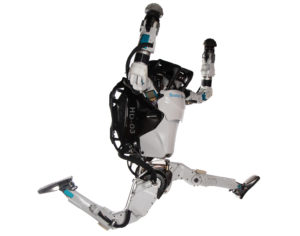The Software Licensing of Robots
This guest article from Alex Cojocaru, Founder & CEO of licenseware.io, tackles the upcoming challenge of managing the software licensing of autonomous robots. No longer science fiction, robots are increasingly present in our day-to-day lives and in business conversations. If you thought licensing servers was difficult, imagine licensing devices of higher complexity that walk around and interact with the virtual and the physical world.

Back in 2015, I wrote an article about how Indirect Usage Licensing would increase due to this hip “new” thing called IoT. While IoT did become increasingly popular over time to the point that we have IoT devices within our smart houses, we didn’t see such a dramatic change in licensing patterns.
While IoT devices have been around for a long time, it took a while before they became mainstream. The technology needed some time to mature, and before you know it, we were all queuing to get our nest devices or raspberry pi sensors and connect them to our heating system, our appliances, the list goes on.
Robots have been around forever. We’ve seen them in books, comics, movies, games, factories, expos, then in malls. However, the technology has become ripe for mainstream adoption in recent years. Autonomous robots are now less a conversation for sci-fi and more present in our day-to-day lives and increasingly present in business conversations.
Most people by now are familiar with Spot from Boston Dynamics and Atlas that can do parkour and backflips. They can even move like Jagger. But leaving the fun stuff aside, these robots are equipped and ready to perform a wide range of tasks useful for construction, security, logistics, and almost any type of dirty or dangerous job.
And they are not the only ones. The Xiaomi Cyberdog is the more affordable version of Spot (by a considerable margin). Of course, there are many examples (if you like robotic companions, also check out Unitree’s robot dogs) of consumer robots in all shapes and sizes, and I expect this trend to keep growing.
As you can expect, these moving tin cans are as smart as the chips and software they have inside. The (mainstream) autonomous robots industry is still early stage. However, we can already see an interesting licensing landscape forming.
Using the Spot, the Cyberdog, and the Unitree dogs as examples, we can observe that:
- Xiaomi open-sourced Cyberdog in partnership with Canonical’s Ubuntu 18.04, enabling the open-source community to develop derivate solutions;
- Unitree’s approach is somewhat similar to Xiaomi. They have a public GitHub repo, making it easy to modify or build novel applications on top of it;
- Boston Dynamics took a closed-source approach, offering Spot in two license models:
- Explorer, which comes with autowalk map creation and replay limited to 1km total map size and default metrics collection enabled;
- Enterprise, which comes with autowalk map creation and replay of maps larger than 1km, and you can opt-out of metrics collection;
To put things into perspective, as these technologies evolve, imagine the different number of functions an autonomous robot can have. Some of them are going to clean the streets. Others will be used for security. Others will deliver food and packages to your door, they will be used in dangerous or toxic environments, they will be used for construction, for operating different kinds of machinery or vehicles, for entertainment, (unfortunately also) for warfare, the possibilities are endless. I can expect entertainment and defense to be one of the top consumers.
From a licensing point of view, all these different types of roles robots will play in society will be associated with varying software functionalities. The same way you install options and packs to your Oracle DB to make it more resilient, more secure, etc. you’ll install other functions to make robots useful for a variety of business contexts. If you thought licensing servers was difficult, imagine licensing devices of higher complexity, that walk around and interact with the virtual and the physical world.
We’ve been joking around for some time with the idea of building an app to manage robot licenses. While the market has not reached that maturity point to become problematic for businesses, I can expect that this will change relatively fast in the coming years.
Related articles:
- Tags: licenseware.io · robots · Software Licensing
